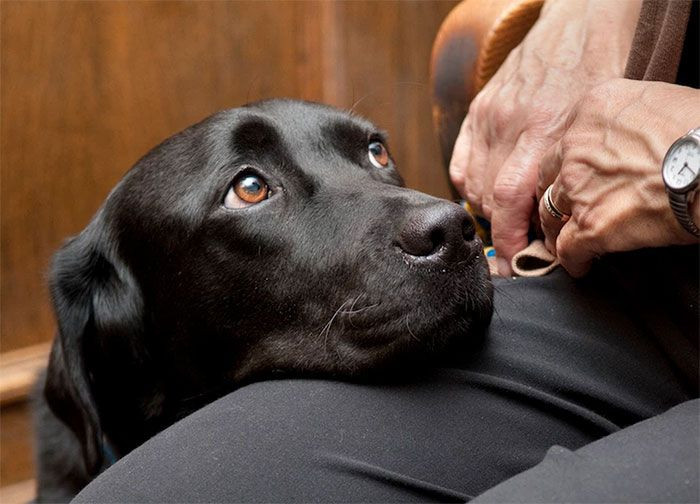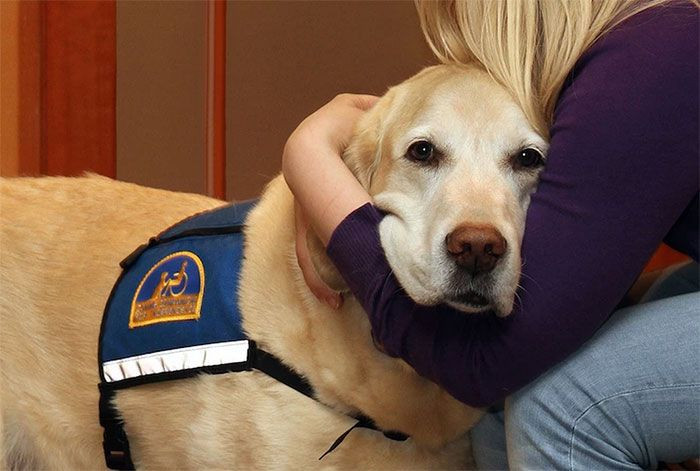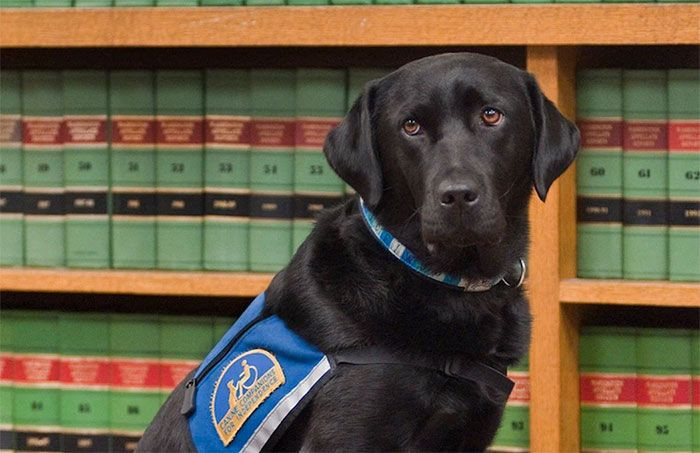Curious Online User Wants To Know If It's Bad For Dogs To Not Have Fellow Canine As Companion

It can be traumatic to testify, but these well-trained dogs are making it easier.

If you thought to issue a speech in high school was difficult you're not alone. Public speaking is a common fear for people everywhere. However common this fear may be, there is a situation that is even more difficult. In quite a few countries defendants have the right to confront their accusers, which means that victims seeking justice are often required to sit in a courtroom and relive their traumatic experience.
On top of recounting what happened to them, they are subject to being questioned by the defendant's attorney at times. The entire experience can be nearly as traumatic as the event that led to court in the first place for some victims.
In an act of empathy and compassion, Ellen O’Neill Stephens and Celeste Walsen found a solution in Courthouse Dogs: dogs in the courtroom to comfort testifying victims. O'Neill told UpWorthy recently:
When a person is reliving a traumatic event, they experience physiological reactions similar to what they had when the event was taking place. This adversarial system [of testifying in front of your attacker] is brutal. A lot of people come out damaged by it.
The pair's non-profit organization was founded in 2004 and they spend nearly 2 years specifically training dogs for their very important jobs. As they stand today, Courthouse Dogs operates in 28 states and employs 87 dogs. Most of their dogs are Labradors or Golden Retrievers. Just looking at the photos it is clear to see the compassion in the animals' eyes as they help victims through their difficult times.
 Courthouse Dogs
Courthouse Dogs Courthouse Dogs
Courthouse Dogs Courthouse Dogs
Courthouse Dogs Courthouse Dogs
Courthouse Dogs Courthouse Dogs
Courthouse Dogs Courthouse Dogs
Courthouse Dogs Courthouse Dogs
Courthouse Dogs Courthouse Dogs
Courthouse Dogs Courthouse Dogs
Courthouse Dogs Courthouse Dogs
Courthouse Dogs“I used to think… I was supposed to make the witnesses squirm. But now I’m telling judges, that technique doesn’t work.”
Everyone needs a new haircut now and again, even our furry friends. Have a look at these before and after photos of doggos getting a make-over.





